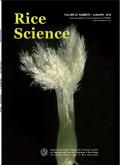Function of R2R3-Type Myeloblastosis Transcription Factors in Plants
IF 6.1
2区 农林科学
Q1 AGRONOMY
引用次数: 0
Abstract
Myeloblastosis (MYB) transcription factors, particularly those in the R2R3 MYB subclass, are pivotal in plant growth, development, and environmental stress responses. As one of the largest transcription factor families in plants, the MYB family significantly regulates plant secondary metabolism, including the biosynthetic pathways for phenylpropanoids, which are crucial for stress resistance. This review presents a comprehensive overview of MYB transcription factor classification and their regulatory mechanisms in plant metabolism and stress responses. We discuss the roles of MYB transcription factors in biotic stress resistance, such as defense against pathogens and pests, and in abiotic stress tolerance, including responses to drought and salinity. Special attention is given to the interactions of R2R3 MYB with other transcription factors and co-repressors, focusing on how these synergistic or antagonistic relationships modulate physiological processes. The multifunctional role of R2R3 MYBs in stress responses positions them as promising targets for enhancing crop resilience through genetic breeding. Furthermore, this review highlights potential applications of MYB transcription factors in developing stress-resistant crops and their utility in plant resistant breeding programs.
r2r3型成髓细胞转录因子在植物中的作用
髓母细胞病(MYB)转录因子,特别是R2R3 MYB亚类中的转录因子,在植物生长、发育和环境胁迫反应中起着关键作用。作为植物中最大的转录因子家族之一,MYB家族显著调控植物次生代谢,包括对抗逆性至关重要的苯丙素的生物合成途径。本文综述了MYB转录因子的分类及其在植物代谢和胁迫反应中的调控机制。我们讨论了MYB转录因子在生物抗逆性中的作用,如对病原体和害虫的防御,以及在非生物抗逆性中的作用,包括对干旱和盐度的反应。特别关注R2R3 MYB与其他转录因子和共抑制因子的相互作用,重点关注这些协同或拮抗关系如何调节生理过程。R2R3 myb在逆境反应中的多功能作用使其成为通过遗传育种提高作物抗逆性的有希望的靶点。此外,本文还综述了MYB转录因子在抗逆性作物开发中的潜在应用及其在植物抗性育种中的应用。
本文章由计算机程序翻译,如有差异,请以英文原文为准。
求助全文
约1分钟内获得全文
求助全文
来源期刊

Rice Science
Agricultural and Biological Sciences-Agronomy and Crop Science
CiteScore
8.90
自引率
6.20%
发文量
55
审稿时长
40 weeks
期刊介绍:
Rice Science is an international research journal sponsored by China National Rice Research Institute. It publishes original research papers, review articles, as well as short communications on all aspects of rice sciences in English language. Some of the topics that may be included in each issue are: breeding and genetics, biotechnology, germplasm resources, crop management, pest management, physiology, soil and fertilizer management, ecology, cereal chemistry and post-harvest processing.
 求助内容:
求助内容: 应助结果提醒方式:
应助结果提醒方式:


